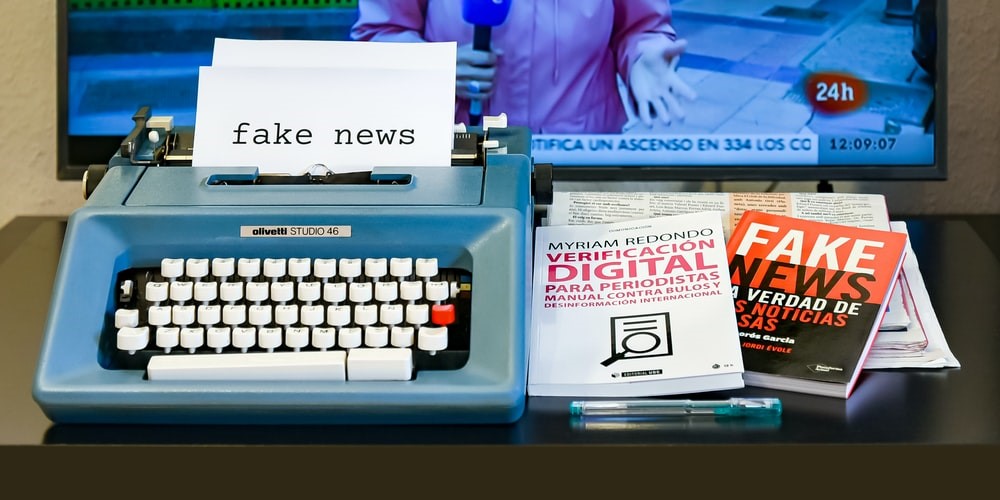
The surge in propaganda and disinformation is challenging for everyone, but none more so than our students. Many of them are young adults who are new to the language and culture. Not only that, but they are maturing and developing new identities. I can only imagine then how perplexing it must be for them when they look at their screens.
The current scene
Throughout the pandemic, L2 learners have increasingly turned to social media and other digital sources to develop their English-language skills. Of course, by immersing themselves in English online communities, L2 learners can build their intercultural competence as well as valuable communications and vocabulary skills. What concerns me is when students spontaneously accept as undisputed truth from the words of “so-called” authorities, including me! I have become increasingly wary of what I say in class and online for that very reason.
Equally troubling are the bogus websites that look legitimate as well as the fake news and pictures regurgitated on Twitter, Instagram, Facebook, blogs, and other social messaging sites. Developing our students’ media literacy skills is essential in the prevailing digital landscape that has no shortage of, in the words of a colleague, “intellectual garbage.”
Even before the pandemic triggered an explosion of digital tools, scholars worried about their effects on language learners: “…these new sources of information require greater scrutiny in order to determine their potential for having insidious effects on the opinion-forming processes of L2 writers” (Radia & Stapleton, 2008, p. 14).
Further, when you consider that American students across all levels are failing basic media literacy and disinformation-detection tests by the Stanford Education Group, it stands to reason that L2 learners would have an even harder time of it. Remember, not only do they have to sift through the onslaught of information, but they do so through a different language and cultural lens. In the Stanford study, students struggled to distinguish sponsored content from news and gravitated to websites because of their slick professional appearances with little concern for the validity of the content (https://ed.stanford.edu/news/stanford-researchers-find-students-have-trouble-judging-credibility-information-online).
Tools to help students spot misinformation
While assessing the accuracy of information is a common outcome of EAP writing programs, we need to prioritize this skill now more than ever. Treading delicately so as not to offend or disparage students for any “ill-sourced views,” we can show them how easily it is to be swayed by sources that masquerade as genuine.
Here are some tools that we can use to guide our students through the chaos:
- ESCAPE (Evidence, Source, Context, Audience, Purpose, Execution) https://washcoll.libguides.com/c.php?g=595601&p=7933952
- The CRAAP test Currency, Relevance, Authority, Accuracy, and Purpose
- Mike Caulfield’s SIFT technique (Stop, Investigate, Find better coverage, Trace)—a great resource for doing a quick analysis of online sources. https://www.youtube.com/playlist?list=PLsSbsdukQ8VYy88IiSJhz4NyBxxtLzsNr
- An interesting, short video called Why Do Our Brains Love Fake News?
- SNOPES fact-checking generator https://www.snopes.com/
- Lesson on “The Power of Images” from https://www.facinghistory.org/resource-library/facing-ferguson-news-literacy-digital-age/power-images
- “Ten ways to spot online misinformation”—includes great questions for students to ask themselves about sources, as well as a terrific quotation by Carl Sagan: “Extraordinary claims require extraordinary evidence.”
Just a few well-planned activities can help students at least think more as they open a post or land on a website. Never has this age-old gem been so important: Don’t believe everything you read!
Reference
Radia, P., & Stapleton, P. (2008). Unconventional Internet genres and their impact on second language undergraduate students’ writing process. The Internet and Higher Education, 11(1), 9–17. https://doi-org.gbcprx01.georgebrown.ca/10.1016/j.iheduc.2007.12.004

Jennifer thank you for a timely and relevant post! I appreciate the online tools that you shared for spotting misinformation, and I can’t wait to try them. A wonderful idea to add this topic to ESL/EAP classes.
I agree with you, Jennifer, that these are extremely important skills. There’s a great Canadian resource that I’ve used, with teaching resources, videos (many featuring Mike Caulfield) and practice activities. It’s pitched at high school students and not designed for English language learners so the language would be challenging for lower levels, but it’s very good. https://ctrl-f.ca/en/